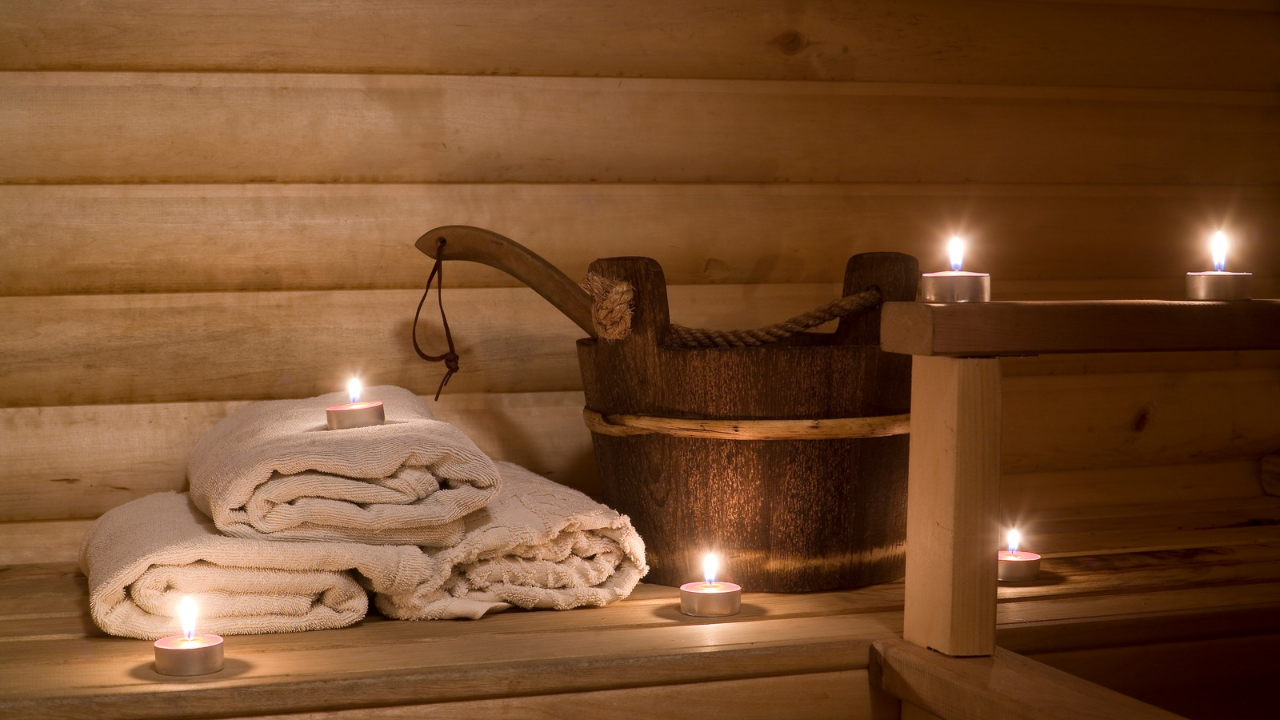Myth or Reality?
The sauna has long been associated with relaxation, detoxification, and wellness. Whether it’s a traditional steam sauna or an infrared sauna, many people swear by the health benefits, including weight loss. But is the idea of using a sauna to lose weight just a myth, or is there any truth behind it? In this article, we’ll explore whether saunas can actually help with weight loss or if it’s just another fitness fad.

What Happens in a Sauna?
Before we dive into the question of whether saunas aid in weight loss, let’s first understand what happens when you step into one. Saunas work by exposing your body to heat, which causes you to sweat. This sweating process is your body’s natural way of cooling down and maintaining a stable temperature.In a traditional sauna, the air temperature is typically between 150°F and 190°F (65°C to 88°C). Meanwhile, infrared saunas use infrared light to heat your body directly, and their temperature is usually lower, ranging from 120°F to 150°F (49°C to 66°C).
Both types of saunas induce sweating, but how does this affect weight loss?
The Myth of Sweating and Weight Loss:
One of the most common claims about saunas is that they help you lose weight simply by sweating out toxins and water weight. Many sauna enthusiasts report a noticeable drop in weight after a sauna session, but this weight loss is typically temporary. It’s important to distinguish between actual fat loss and the loss of water weight.
Why Is It Just Water Weight?
When you sweat in a sauna, you lose fluids from your body. This can lead to a temporary drop in weight, but it’s not fat loss. Once you rehydrate, your body will retain the water, and the weight will return. This is why you may feel lighter immediately after a sauna session but see no lasting change on the scale once you drink water again.

Sauna and Calorie Burn: What’s the Connection?
Another claim is that saunas increase calorie burn, helping you lose weight over time. While it’s true that your heart rate increases in a sauna due to the heat, the actual number of calories burned is relatively small compared to other forms of exercise.
Does Your Heart Rate Increase?
When your body is exposed to heat, your heart works harder to maintain a stable internal temperature. This leads to an increase in heart rate and circulation, which may burn more calories than when your body is at rest. Some studies suggest that a 30-minute sauna session can burn between 100 to 300 calories, depending on factors like your body weight and the type of sauna. However, this calorie burn is still far less than what you’d burn during a vigorous workout.
The Role of Metabolism:
The heat in a sauna can increase your metabolism temporarily, but this effect is short-lived. While it might feel like your body is working hard, it’s important to note that the metabolic boost is minimal compared to regular exercise like running, cycling, or strength training.
Detoxification: Is Sauna the Answer?
Another reason people flock to saunas is the belief that they help with detoxification. The idea is that sweating helps flush out toxins from the body, including heavy metals and other waste products.
What Does Science Say About Detoxification?
While sweating can help expel some toxins, it’s not the most effective way to detoxify the body. The liver and kidneys are the primary organs responsible for removing toxins from your system. While sweating may assist in the process by removing trace amounts of certain substances, the majority of detoxification occurs internally.Using a sauna may give you a sense of cleansing, but relying on it as a primary detox method is not backed by solid scientific evidence. It’s still essential to maintain a healthy diet and lifestyle for proper detoxification.

Can Saunas Help with Post-Workout Recovery?
Although saunas may not directly cause fat loss, they can aid in recovery after a workout. Many athletes and fitness enthusiasts use saunas to relieve muscle soreness and improve circulation.
Reducing Muscle Soreness:
The heat from the sauna can help relax muscles and ease tension. It increases blood flow, which helps deliver oxygen and nutrients to muscles that may have been strained during exercise. This process can help speed up recovery and reduce muscle soreness, allowing you to work out more frequently and effectively.
Improving Circulation and Flexibility:
Regular sauna use can improve circulation, which is beneficial for overall cardiovascular health. The heat can also enhance flexibility by loosening up tight muscles and improving joint mobility, making it easier to perform stretching exercises or other recovery routines.

Long-Term Weight Loss: Sauna Alone Won’t Do It:
Although saunas may have a role in your fitness routine, relying on them for significant weight loss is not a practical approach. True, sustainable weight loss comes from creating a calorie deficit, where you burn more calories than you consume.
What Really Works for Weight Loss?
To achieve lasting weight loss, a combination of factors is essential:
1. Diet:
A balanced, nutrient-dense diet that’s rich in fruits, vegetables, lean proteins, and healthy fats is crucial for losing weight. Reducing your intake of processed foods and excess sugars can help you create the calorie deficit needed for weight loss.
2. Exercise:
Regular physical activity, including both cardiovascular exercise (running, cycling, swimming) and strength training, is necessary for building muscle and burning fat.
3. Lifestyle Changes:
Adequate sleep, stress management, and hydration all play vital roles in weight loss. A holistic approach is key to seeing long-term results.

Conclusion: Sauna and Weight Loss – A Temporary Boost, Not a Solution:
While saunas may offer some temporary weight loss through water weight loss and calorie burn, they are not a magic solution for shedding fat. The key to sustainable weight loss is adopting a consistent routine of healthy eating, regular exercise, and maintaining a balanced lifestyle.
Saunas can be a valuable addition to your wellness routine by aiding in relaxation, muscle recovery, and improving circulation. However, they should not be relied upon as the primary method for losing weight. Instead, incorporate saunas as part of a broader fitness and health strategy, and focus on long-term lifestyle changes that support your weight loss goals.






